The litany of the (Everest) ladder
A ladder at the Hillary Step? This story just won’t die. Last spring, a member of the Nepalese government had given a tip to some journalists that there were considerations in Kathmandu about this subject. After this year’s General Assembly of the International Climbing and Mountaineering Federation (UIAA) at Flaggstaff in the USA a few days ago, the issue was item 1 of the final news release. “As one of the most iconic landmarks of the world, Mount Everest belongs to all of mankind”, the UIAA statement reads. “Thus, the ascent of this magnificent mountain should be reserved to those who acquired the skills and the experience needed to reach the highest point of the world.”
![]() read more
read more
Pulmonary edema stops Alix von Melle on Makalu
The most important thing first: Alix von Melle is doing well under the circumstances. The 42-year-old, who has scaled six eight-thousanders and is therefore the most successful German female high altitude climber, started with her husband Luis Stitzinger for their second summit attempt on Makalu at the end of last week. Both reached their last high camp at 7600 meters, as planned. The following night Alix and Luis began to climb to the summit. They wanted to reach the highest point at 8485 meters without bottled oxygen. It was cold and windy, Luis writes. “Like in the past days Alix was plagued by a strong cough, in the extremely cold and dry air at an altitude of more than 7500 meters. After a strong coughing fit Alix suddenly said: Something’s not right, I can hardly breathe!”
![]() read more
read more
German women power on Makalu
Super Sunday on Makalu. Two German female climbers reached the 8485-meter-high summit of the fifth highest mountain in the world on 25 May: Heidi Sand and Billi Bierling. Both were members of the team of Himalayan Experience. Therefore I am tempted to say that both are the first German women on Makalu.Heidi Sand was motivated to do high altitude mountaineering by a serious illness. When she was 43 years old, the sculptor from the town of Stuttgart she got the devastating diagnosis: colon cancer. She swore: If I survive, I will scale Mount Everest. Both happened. Heidi fought the cancer and reached the top of the world in 2012. In 2013, she scaled Cho Oyu – and now at the age of 47 years her third eight-thousander Makalu.
![]() read more
read more
Avalanche on Kangchenjunga kills three climbers
The ridge between triumph and tragedy is narrow. On Sunday, Chhanda Gayen had scaled as first Indian woman Kangchenjunga, with 8586 meters the third highest mountain in the world. Four days later, she was confirmed dead because there is no more hope to recover her alive. When she was trying to climb also to the 8505-meter-high summit of Yalung Kang, also known as Kangchenjunga West, she and the Sherpas Dawa Wangchu (28.) and Migma Temba (24) were stuck by an avalanche, reports the “Himalayan Times” in Kathmandu. Due to bad weather, the search for the missing climbers has been abandoned .
![]() read more
read more
Nives and Romano: Only as a couple
Never let it be said that climbing was not for romantics. The Italian couple Nives Meroi and Romano Benet prove the contrary. For them, it is out of the question to climb an eight-thousander without the partner. Last Saturday, Nives and Romano reached the 8586-meter-high summit of Kangchenjunga, the third highest mountain in the world. As always together, as always without using bottled oxygen, as always in a clean style. “Our achievements are defined by a smooth alpine style: simple and genuine, we remain true to ourselves at all the times and in harmony with the mountains”, Nives once said. Kangchenjunga is the eight-thousander number twelve for Meroi and Benet. Now only Annapurna and Makalu are still missing in their collection.
![]() read more
read more
German doctor wants to help Sherpa families in the long term
18 April has changed many things: on Mount Everest, in the lives of the families of the 16 avalanche victims – and also for Matthias Baumann. The 42-year-old trauma surgeon from the German town of Esslingen was the expedition doctor in the team of the Argentine twin brothers Damian and Willie (Guillermo) Benegas and actually wanted to climb Everest in his second attempt, on the Nepalese south side. In 2011, his first attempt on the Tibetan north side had failed at 8600 meters: When he wanted to change his oxygen bottle at the Second Step, the key point of the normal route, Matthias realized that his Sherpa had packed an empty instead of a full bottle.
Three years later, this spring, Baumann climbed through the Khumbu Icefall, on the day before the avalanche. “I knew that avalanches had been coming down from the West Shoulder of Everest for four or five years. Up there, the seracs are threatening”, Matthias told me. Even if the fun at climbing gained the upper hand, the respect remained. “I was always looking up to the seracs.” On the following day, the Khumbu Icefall became a death trap for 16 Nepalese climbers. With other physicians, the German doctor took care of the injured climbers who were brought down to the base camp. After the end of the expedition Matthias visited almost all the families of the Nepalese who had lost their lives – and launched a fundraiser for them.
![]() read more
read more
End of the season on Everest? Two women say: No!
Is there still some climbing possible on the Nepalese side of Mount Everest? The “Himalayan Times” reported that the Chinese female climber Wang Jing was with seven Sherpas on the way to base camp. The 40-year-old wanted to climb the highest mountain on earth. Wang was already once on the summit of Everest, on 22 May 2010, becoming the first Chinese woman who climbed the mountain from the south side. In her home country she is a star. Wang has written a book about her mountaineering and is leading an outdoor outfitter in Beijing. Everest is part of her “Project 7+2”. She wants to scale the “Seven Summits”, the highest peaks of all continents, in record time and in addition reach the North and the South Pole.
![]() read more
read more
Help for families of avalanche victims on Everest
Waiting for the calm after the storm. Currently the wind is blowing strongly in the summit region of Mount Everest – with speeds up to 60 knots (about 110 km per hour). A summit attempt of one of the about ten teams on the Tibetan north side of the mountain is out of question. Not until 16 May a good weather window with low wind is expected. On the south side of Everest, according to the U.S. expedition leader Eric Simonsen, the “Icefall doctors” brought down their ladders and ropes from the Khumbu Icefall. Until next season, the material is deposited in a storage in Gorak Shep, the last permanently inhabited small village near Mount Everest at 5200 meters. Thus there will be definitely no climb to the 8850-meter-high summit from the Nepalese side this spring. This week in Kathmandu, the Japanese climber Ken Noguchi presented on behalf of his environmental protection organization “Seven Summits Actions for Sustainable Society” a donation of $ 100,000 to Ang Tshering Sherpa, president of the Nepal Mountaineering Association (NMA).
![]() read more
read more
Goettler is going to climb Mount Everest
That was a short home leave. Just one month after his return from Nanga Parbat David Goettler has packed his bags again. His goal this spring: Mount Everest. “To climb Everest via the normal route without supplemental oxygen is challenging enough. That would be interesting”, David had told me last August when I had asked him whether the highest mountain in the world was an attractive goal for him. Now the 35-year-old climber is putting this project into action. He wants to climb Everest via the normal route on the Nepalese south side of the mountain, David writes me while trekking from Lukla to Namche Bazaar. “Without bottled oxygen and high porters.” I want to know whether he is a member of a team. “I and 600 others … ;-)”, replies Goettler. “As a team, I have only myself !”
![]() read more
read more
Luis, last minute
In one point it is the same for mountaineers who want to climb an eight-thousander and for everyday travellers: Shortly before departure the dates are accumulating. They have to pave the way for their long absence in their jobs, meet friends and family and – last but not least – make the last preparations for the upcoming project. That applies to Luis Stitzinger, too. We met last weekend in Oberstdorf in the Alpes, the day before Luis’ departure to Nepal. The 45-year-old German and his wife Alix von Melle want to climb again Makalu, at the height of 8485 meters the fifth highest mountain in the world. In 2010, the couple had to turn back on 8050 meters at temperatures of minus 45 degrees Celsius. Alix and Luis have already climbed six eight-thousanders: Cho Oyu, Gasherbrum II, Nanga Parbat, Dhaulagiri, Broad Peak and Shishapangma, all without using bottled oxygen. This makes the 43-year-old Alix the most successful German women at the highest mountains in the world.
![]() read more
read more
Goal: A new route to the top of Kangchenjunga
Even if it may seem in spring again as though there was only Mount Everest, it is also worth looking to other eight-thousanders. A highly qualified team has been formed to open a new route via the north face of Kangchenjunga: Denis Urubko and Artem Brown from Russia, Adam Bielecki from Poland and the Basque Alex Txikon. Urubko has initiated the project. Denis, who was born in Kazakhstan but is now a Russian citizen, wants to draw a definite line under the past year which was so unfortunate for him.
![]() read more
read more
Garbage collection on Everest
When, finally, will a piggy bank be placed in the editorial offices, into which everyone has to pay five Euros, who calls Mount Everest the “highest garbage dump in the world”? The money could then be donated to environmental projects in Nepal. These days, the phrase again was often used in the German press. And hardly anyone made the effort to look at this more closely. What has happened? There is a new rule to remove garbage from Everest, no more and no less.
![]() read more
read more
Less expeditions, less money
Nepal sees his mountain luck run out. “The government must frame policies to gain a competitive edge”, a report by the Ministry of Culture, Tourism and Civil Aviation said which was quoted in the “Himalayan Times”. The neighbouring countries had started aggressive campaigns to attract more climbers. India had offered a discount of 50 per cent on climbing fees, Pakistan had waived off royalties for all peaks below 6500 meters, the report said. Nepal is charging fees for mountains which are much lower, e.g. for 5500-meter-high Chhukung Ri, a popular trekking peak in the Khumbu region.
![]() read more
read more
New tourist tracking system for Nepal
This man has a vision. “I am thinking to write about how we can make Nepal a developed country in 30 years. It is not an impossible dream and I believe that it is doable”, Mahabir Pun writes on Facebook. The 59-year-old teacher was born in Nangi, a remote mountain village in the west of Nepal. After completing his studies in the USA Mahabir returned to his home country and founded a high school in Nangi. He brought WiFi and thus also the Internet to the mountains. For his achievements Mahabir Pun has received several awards, e.g. in 2007 the Ramon Magsaysay Award which is often considered to be Asia’s Nobel Prize.
Just now Mahabir has started a new project. In the region around the 8000er Annapurna a new tourist tracking system is being tested for six months. It was developed i.a. to locate and rescue single trekkers who have got in trouble. Nearly a dozen foreign tourists have gone missing from several hiking and trekking trails in Nepal over the past decade. I wrote to Mahabir to get some more details. He replied promptly.
Mahabir, did you develop this system by yourself?
“E-Networking Research & Development” is a NGO and I am the chairman. We developed this system with our Japanese partners from Japan International ICT (Information Communication Technology) Association. Hardware was developed in Japan and we worked together for its overall development.
![]() read more
read more
Ines Papert: “An awesome moment”
Ines Papert could have done without this kind of souvenir from the Himalayas. “The healing of fingers and toes will take some time”, says the 39-year-old after her return from Nepal. As reported in my blog the German top female climber made a first ascent of 6719-meter-high Likhu Chuli I, also known as Pig Pherado Shar, on 13 November after opening a new route through the North Face of the 6000er together with Thomas Senf. “I never thought that frostbite could emerge so creepingly”, Ines is surprised. “During our climb we were as cold as never before but we have taken the first symptoms very seriously.” For this reason, Thomas abandoned the final climb to the summit within his reach at the last camp on 6580 meters.
![]() read more
read more



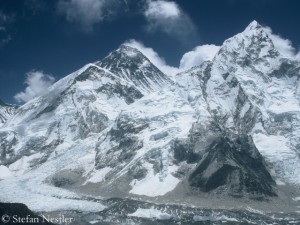

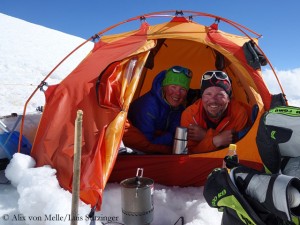
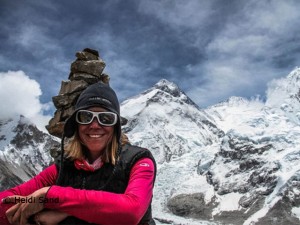

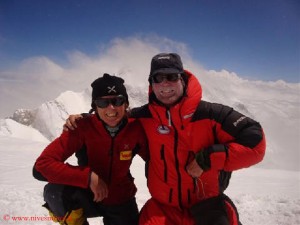
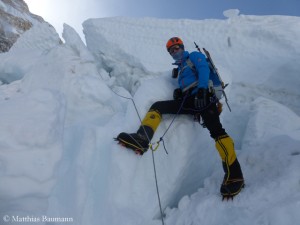
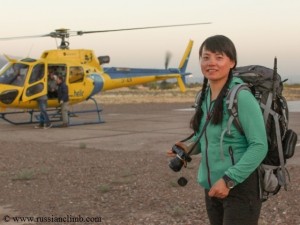
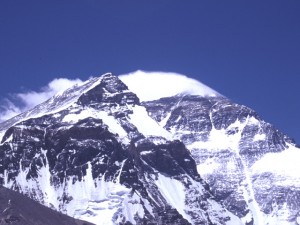
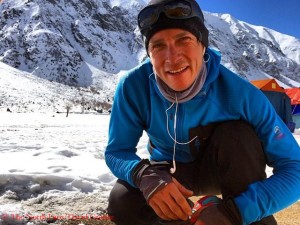
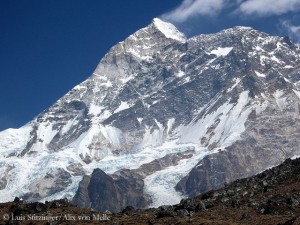
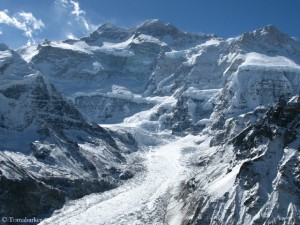
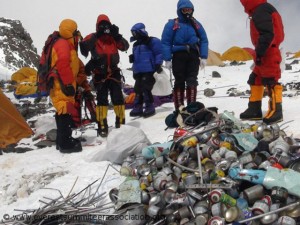
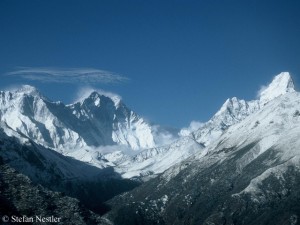
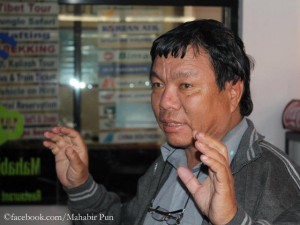
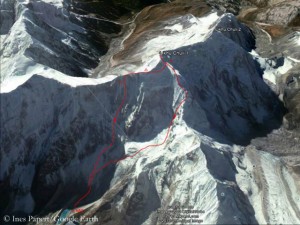





Feedback